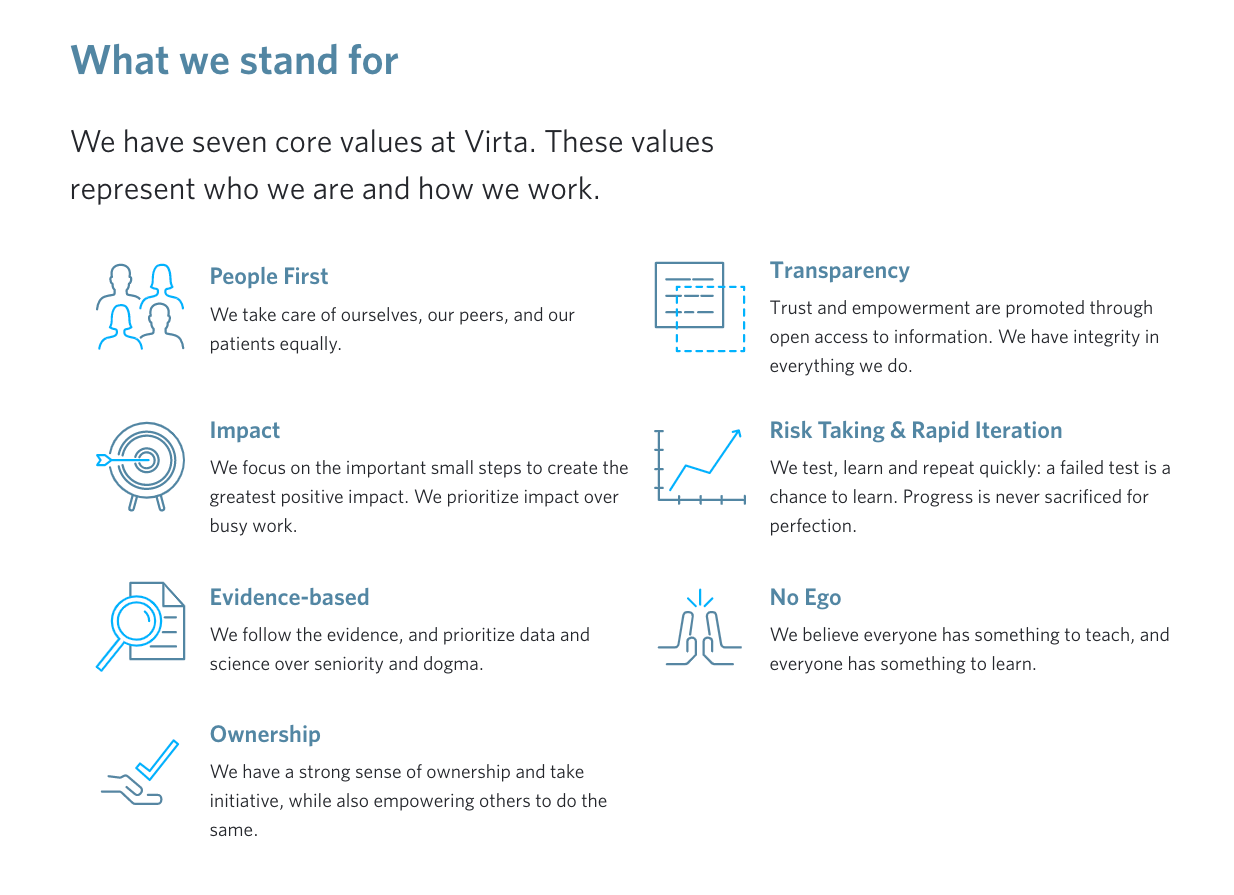A Modern Guide to Lean OKRs
A Modern Guide to Lean OKRs
Part I
When OKRs work for an organization, it’s because of these four As:
- Authenticity
- Accountability
- Adaptability
- Alignment
There are additional prerequisites that leaders, especially startup founders, should reflect on before diving in headfirst.
- Senior Commitment
- Maximum Adaptability
- Continuous Improvement
Step One: Define

Step Two: Screening (Positive & Negative)
Integrating it into the OKR process is easily done by running each objective through a simple question:
Is this objective supportive, neutral, or contradictory to our purpose and values?
Step Three: Set, Reflect, and Reset
With each cycle of OKR reviews and check-ins, it may be valuable to build in review questions like “are these OKRs adequately aligned with our purpose of X, and core values ABC?”
Part II
What’s an objective?
Our shortlist of objectives, usually numbering fewer than five, should sum to define our success.
If met over the period of measurement, this collection of completed objectives should prove we’ve succeeded.
The simple lexicon can be our “Objective is X, as measured by key results X1, X2, X3”. This “as measured by” phrase will come in handy when testing OKRs as they get assembled.
A good key result is specific, measurable, achievable, relevant and time-bound
we have RAMPS
- Relevant. This may sound obvious, but I have seen many excellent teams put up OKRs which were important, but less-than-relevant.
- Achievable. Key results need to be at least achievable.
- Measurable. As discussed below in Specific, the key to results such as “48% market share” is that we must be sure to have a specific report to point to.
- Purposeful. Imagine you are a media company. Do your objectives and key results align with your purpose?
- Specific. Objectives that are measured by non-specific key results will not work.
So, what makes these OKRs “lean?”
- The One-Page Test. Your entire team-wide objectives and key results for up to four quarters (i.e., four different review periods) should fit on one page.
- The One-Day Test. With most organizations, assuming you have built out clear purpose and values statements, OKRs do not need to be more than a one-day process with an executive team.
exceptions and tricks of the trade in implementation.
- Subjective measures. Some measurements will feel impossible to get right in “Measurability.” If you have two managers not playing well together, how is this resolution measured? Things like “as measured by the evaluation of the exec team” or “as measured by feedback gathered from at least five people across the team by your manager” are acceptable. These measurements are not perfect and can be misused. However, if the managers are doing their jobs correctly, these are acceptable.
- Pushing down a level. How far down do we take this? My rule of thumb is to roll this out over time starting with team-wide goals, pushing down with success.
- Changes along the way. OKRs should be considered living documents.
Part III
First, plan and roll out your team-wide OKRs. Second, take the OKRs down a level in the organization. Finally, use OKRs at a personal level, and integrate them with performance reviews.